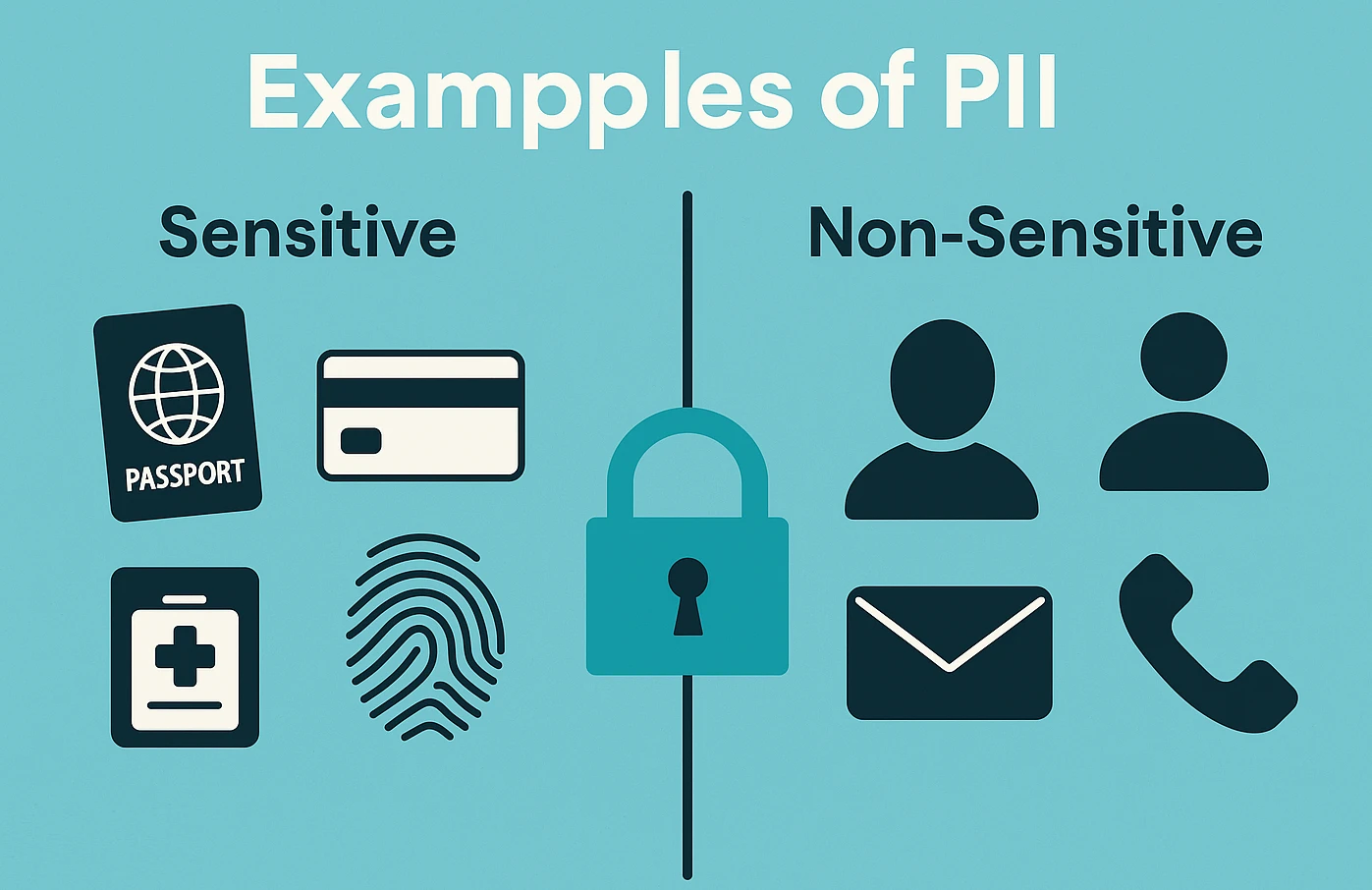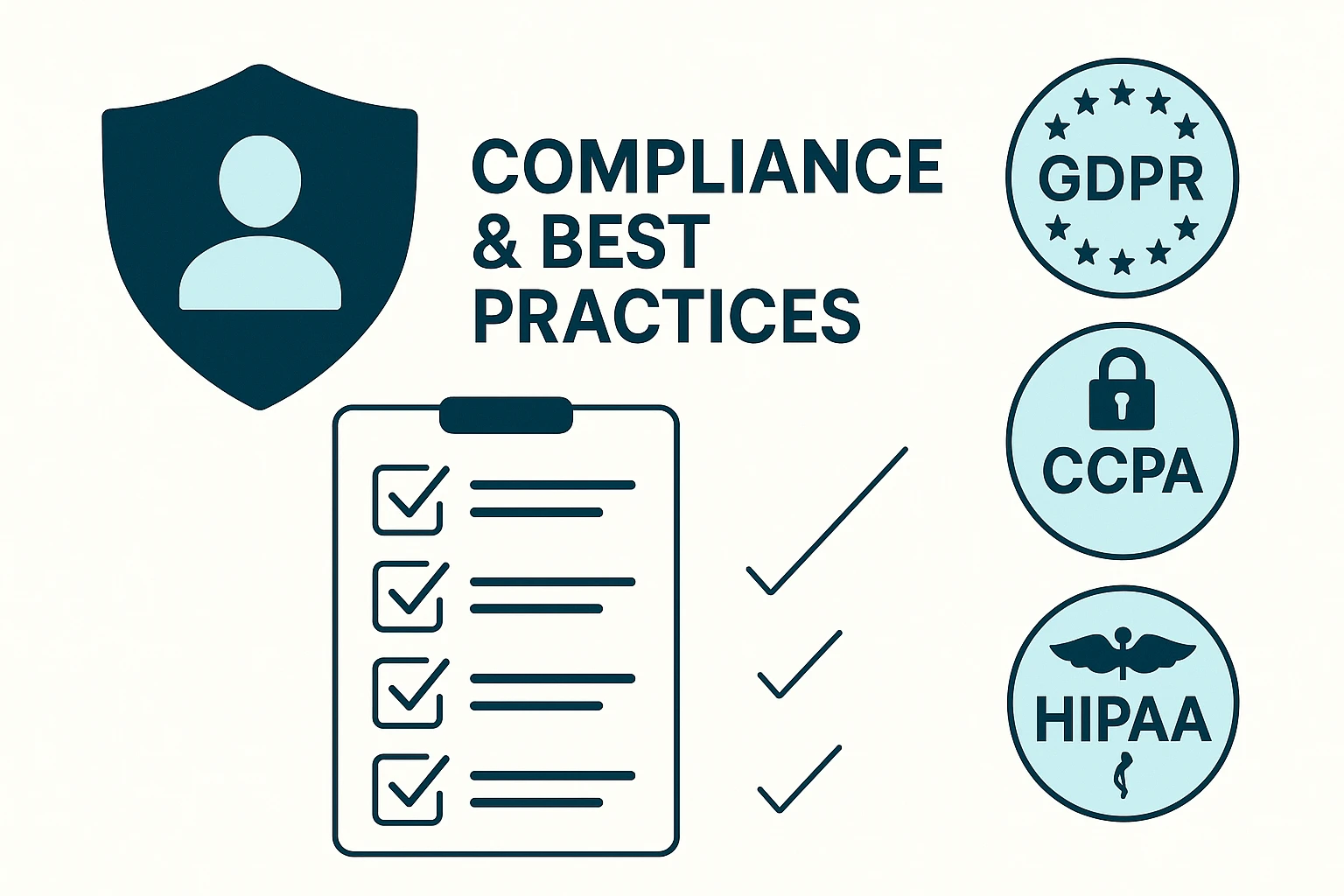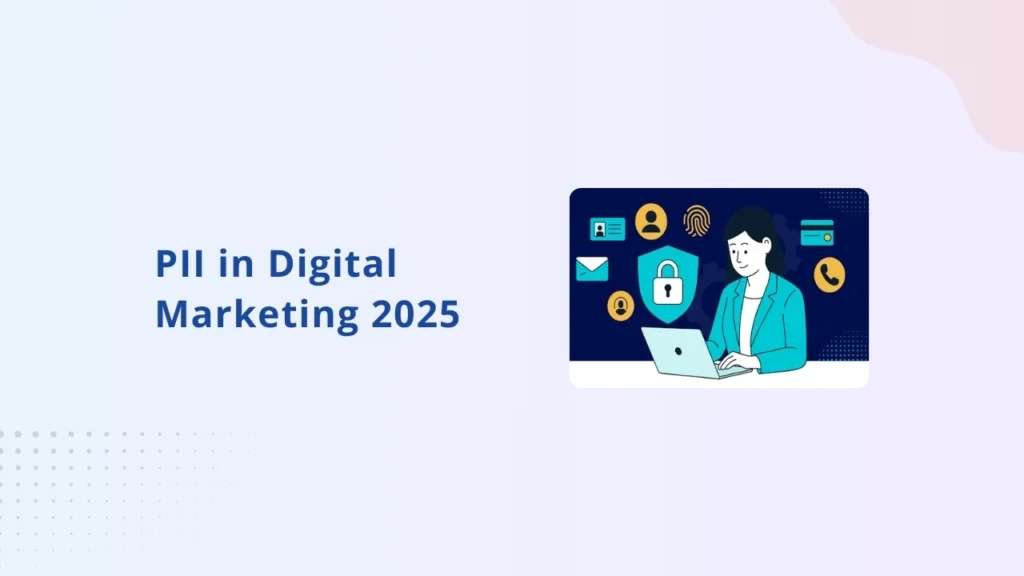Personally Identifiable Information (PII) in digital marketing and eCommerce is at the center of today’s data privacy discussions. For businesses, PII drives personalization, remarketing, and customer support. But mishandling it risks heavy fines, data breaches, and reputational damage.
In this guide, we explain what PII really means, show examples of sensitive and non-sensitive data, explore how marketers use it, and share practical steps to stay compliant while still driving growth in 2025.
Examples of PII: Sensitive vs Non-Sensitive Data Explained

Sensitive PII (high-risk if leaked)
- Passport or national ID number
- Bank account or credit card details
- Biometric data like fingerprints or face scans
- Medical history or patient records
Non-Sensitive PII (lower risk, often public)
- Full name
- Email address
- Phone number
Why this matters: sensitive PII requires strict safeguards under privacy laws such as GDPR and CCPA. Non-sensitive PII may seem harmless, but in combination it can still identify someone. For example, a name plus city and workplace can be enough to trace a person.
Why PII is Important for Marketing and eCommerce Growth
Marketers and eCommerce brands rely on PII every day to build better customer experiences.
How PII helps businesses
- Personalization: Recommending products or offers based on past purchases
- Customer support: Using account history to resolve issues quickly
- Advertising accuracy: Meta’s Conversion API and other ad platforms match events using PII like emails and phone numbers. Avoiding common Meta Pixel mistakes can lower match quality and waste budget.
- Fraud prevention: Login verification and transaction checks often depend on PII
However, customers are increasingly privacy-conscious. Studies show that more than 80 percent of consumers are less likely to buy from a brand after a data breach. This makes responsible handling of PII a competitive advantage. Businesses that protect privacy build stronger trust, loyalty, and repeat revenue.
How to Handle PII Safely in Analytics and Tracking
Analytics and ad platforms are powerful, but they are not designed to process raw PII. Sending personal data like names or email addresses into Google Analytics 4 or Meta Ads can violate regulations.
Best practices for safe handling
- Anonymize data: Strip or mask identifiers before transfer, for example replacing an email with a random ID
- Pseudonymize data: Use hashing to transform personal fields while keeping analysis possible
- Generalize information: Store age brackets instead of exact birth dates, or city instead of full street addresses
- Use server-side tagging: Process data on your own server first, then filter or anonymize before sending to external tools to keep control over identifiers and protect user privacy
For example, Google Analytics 4 and Meta’s Conversions API require strict filtering of identifiers to remain compliant. Using Consent Mode v2 helps align tracking with user choices across ads and analytics.
GDPR, CCPA, and Global PII Compliance Basics for Marketers
As of 2025, marketers handling PII must comply with major privacy laws worldwide:
- GDPR (EU): Requires consent, user rights, and breach notifications. Penalties reach up to €20M or 4% of global turnover
- CCPA / CPRA (California): Grants rights to know, delete, and opt out of data sharing. Fines: $2,500 per unintentional violation and $7,500 if intentional
- HIPAA (US healthcare): Protects medical data. Civil fines range from $100 to $50,000 per violation, capped at $1.5M annually. Criminal fines may apply
- LGPD (Brazil): Similar to GDPR. Fines up to 2% of Brazilian revenue, capped at R$50M
- PIPEDA (Canada): Requires consent and secure processing. Penalties up to CAD $100,000 per violation
These laws show one clear trend: if you use personal data, you must secure it and respect user rights or risk losing trust and facing heavy penalties. Learn more about aligning with GDPR and CCPA requirements.
Best Practices for Managing PII in Your Organization

Here is a checklist to strengthen your PII management:
- Minimize collection: Only ask for the data you truly need
- Stay transparent: Clearly explain what you collect and why
- Use consent banners: Respect user choices about tracking and personalization
- Apply anonymization tools: Remove or mask sensitive data before analytics
- Train your team: Make privacy awareness part of onboarding
- Create deletion workflows: Honor customer requests to delete data quickly
- Audit vendors: Ensure your ad platforms, CRMs, and analytics tools meet compliance standards
- Conduct privacy audits: Review your processes regularly to identify risks early
Making these practices part of your culture builds customer confidence and reduces compliance risks.
👉 Related reading: Fix Missing Revenue in GA4
Frequently Asked Questions
Q. Is an IP address considered PII under GDPR?
Yes. Online identifiers like IP addresses are treated as personal data because they can be linked to individuals.
Q. Can I use customer emails for marketing?
Yes, but only with explicit consent and a clear opt-out option.
Q. What is anonymization in analytics?
It is the process of altering data so that individuals cannot be identified. Methods include hashing, masking, or aggregating.
Q. What happens if I mishandle PII?
Consequences include fines, lawsuits, loss of reputation, and customer churn.
Q. How does server-side tracking protect PII?
By processing data on your own server first, you can anonymize or filter sensitive fields before sending them to third parties. Effective event deduplication also keeps reporting accurate across pixel and CAPI.

